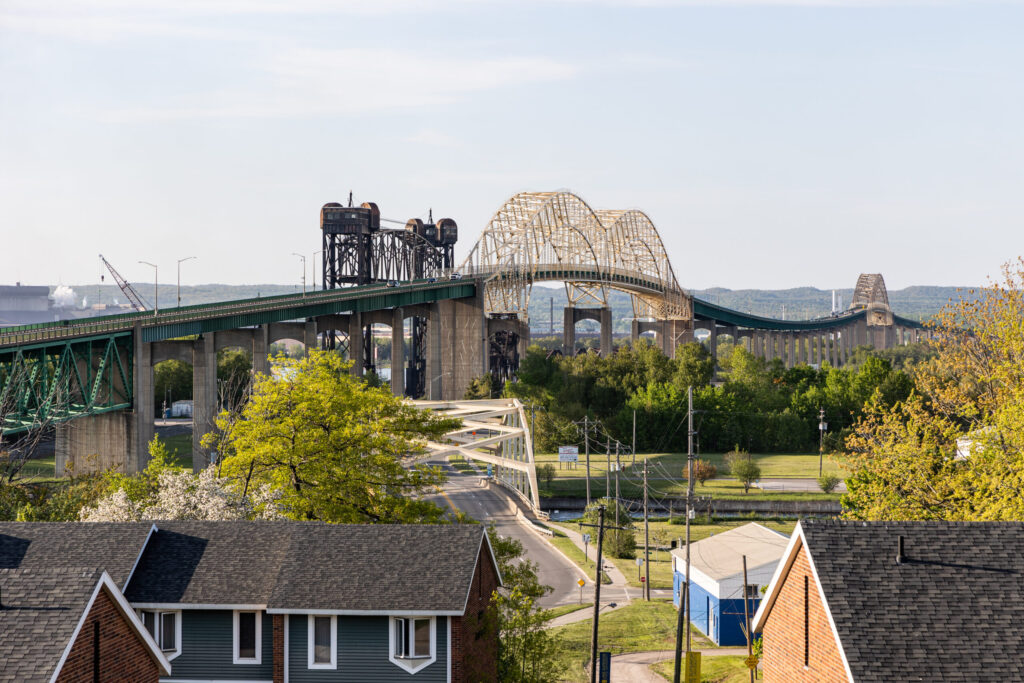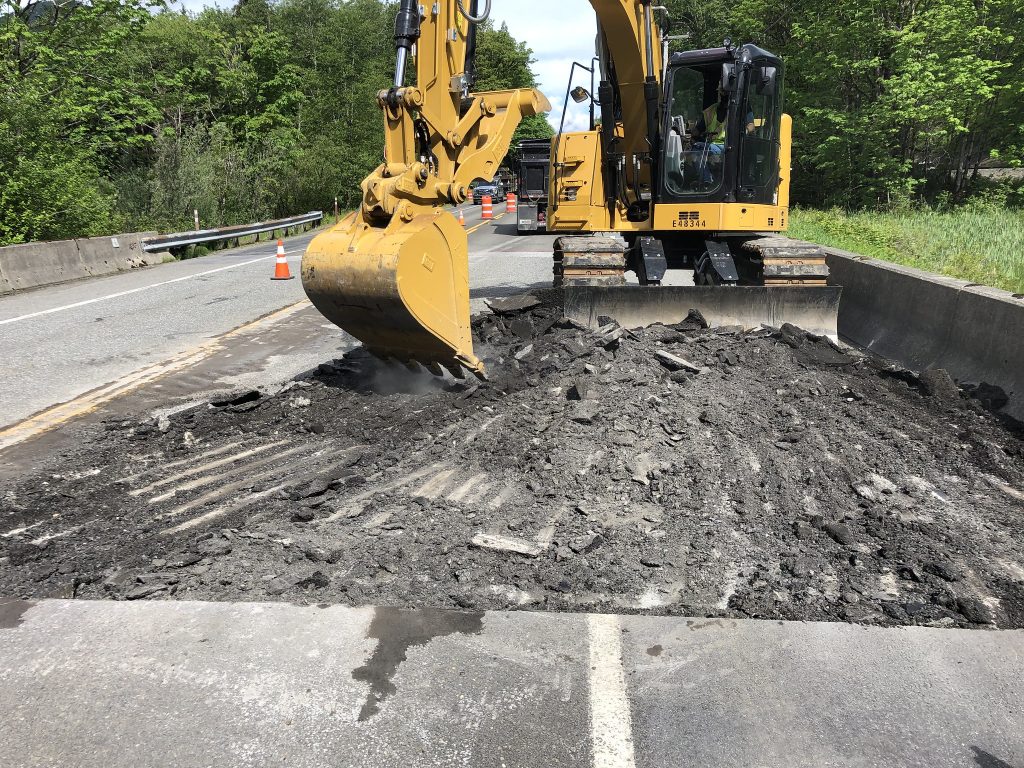
The House bill needs some changes to make repair the number one priority

UPDATE, June 17: A bipartisan amendment to fix the issues we detailed below was accepted by unanimous consent in the House Committee on Transportation and Infrastructure. Thank you Chair Rep. Peter DeFazio, Rep. Jesús G. “Chuy” García, and Rep. Mike Gallagher for your tremendous support and leadership. View our amendment tracker for the INVEST act here, get real-time updates by following @t4america on Twitter, and take action by sending a message to your representative if they sit on this House committee.
The House’s new INVEST Act made a strong effort to prioritize maintenance, but there are still loopholes that can allow states and metro areas to avoid the legislative intent of a real, concrete focus on repair first. Here’s a run down on our concerns with the repair provision and how it could be strengthened in next week’s markup in the House transportation committee.

Flickr photo of bridge resurfacing by WSDOT. https://www.flickr.com/photos/wsdot/49921039787
We’ve spent 60-plus years building an unparalleled highway system with hundreds of thousands of bridges, in addition to scores of metropolitan transit networks and a network of other streets. But we have failed to steward our assets well. For no good reason at all, we’re still spending money like it’s 1956, expending money we don’t have to build roads we can’t afford to maintain which fail to bring the promised economic returns—all while neglecting repair needs. Liberals have supported and aggressively funded the status quo, ignoring the transportation program’s impact on climate, public health, and access to opportunity. Conservatives have joined them, failing to take a stand for bedrock values of good stewardship of federal dollars and keeping federal spending low. We must make repair and maintenance the core, number one priority of the federal transportation program. We cannot afford to keep expanding our system without any plan for maintaining it.
When we first read through the INVEST Act last week we were excited to see that the committee clearly made a good faith effort to prioritize maintenance and after a cursory look we were inclined to give it a passing grade on our first principle of prioritizing repair. But the deeper we looked into the language, the more we saw the loopholes.
It is indeed a major change that the committee proposes dedicating 20 percent of the two biggest sources of state DOT funds toward repair. In addition, states have to fulfill some new conditions to add new capacity with the largest highway program. Both are good steps and we applaud them. However, the INVEST Act’s fix-it-first language still needs to be strengthened to ensure a true focus on prioritizing repairing what we have before building new things that come with expensive, long-term repair costs. There were three misses in the House’s approach, but all can be fixed if the House is truly committed to ensuring that we preserve and maintain our existing transportation network.
1) Too many definitions are either missing, or too vaguely defined
Because the committee left a lot of the vital details to the USDOT Secretary to determine via regulatory language, the final verdict on repair won’t be decided in the legislation (as it should). As an example, for states to add new capacity with core highway funds, they have to fulfill three conditions: They have to demonstrate that they are making progress on repair, they have to consider operational improvements and transit and show that expanding roadway capacity is more cost-effective than either, and they have to demonstrate that the expansion project would meet another performance target, like congestion reduction.
Those three terms in italics will be left up to the USDOT rulemaking process, and can already have a long history of being manipulated to add new capacity. It would help to put more explicit parameters on what defines “progress on repair.” Does it mean meeting the state or MPO’s own repair targets, which could be unambitious? And when it comes to measuring cost-effectiveness and benefit cost analysis, the way these have been applied to transportation projects in the past have overstated the benefits of highway capacity expansions and undervalued or failed to value climate, equity and public health benefits.
2) To truly prioritize repair, states should prove they can maintain the new things they build
Even if states fulfill these conditions above to add new capacity, there’s no language requiring the project sponsor to prove they can maintain the asset they are building. This is a big miss, and this is one of the primary reasons we’re all in this mess in the first place.
Even if states make valuable and measurable progress on state of good repair, it would be negligent to allow them to build new things without requiring that they consider and plan for how they will take care of them. You don’t buy a house when you manage to secure some of the upfront costs (a downpayment), you also have to prove to the bank that you have a plan for paying that monthly mortgage for the next 15 or 30 years. We already require transit capital project sponsors to provide a plan for long-term maintenance when they apply for federal funding. It’s time to start requiring this degree of stewardship and responsibility to a highway program that has been sorely lacking it. Simply adding this as a core requirement to the conditions for expansion via an amendment could bring about this powerful change.
3) All the tools the states have to fulfill this repair focus were designed to justify new highways
The biggest challenge here is that the House is counting on an entrenched culture that was organized around the building and expanding a national highway system to accomplish something entirely new. The tools that transportation agencies have at their disposal—the ones the House is asking them to use to fulfill this new focus on repair—were developed specifically to justify new highways. Without other changes, they will continue to do so.
The transportation demand models assume the same amount of driving in a neighborhood built only for cars as they do for a neighborhood built for walking. These models do not foresee that making space on a highway might invite more driving in the space cleared up. They often predict, strangely, that narrowing a lane in the city from 12 to 10 feet somehow means that the road can accommodate fewer 6-7 feet wide vehicles. These tools are old, flawed and often wrong. Comparing costs and benefits is a great idea, but we need to make clear that the benefits should be calculated in a way that is reasonably likely to be correct. And that can be done by simply asking the agencies to look back and report on how often their projections actually turn out to be right when making a justification for a massive new investment with taxpayer dollars.
We are hopeful that we’ll be able to report news of a specific amendment to make many of these fixes when the committee considers the bill, so stay tuned. We will need your support!
Wrapping up
If infrastructure is as bipartisan as everyone always claims then commonsense should prevail on this point. Republicans should care deeply about conserving taxpayer funds. Democrats should care about climate and equity impacts. Both should seek to maintain faith and public trust in the program. Strengthening these repair provisions should be an easy, bipartisan win and we urge Chairman DeFazio and House Transportation and Infrastructure Committee members to make it happen.



